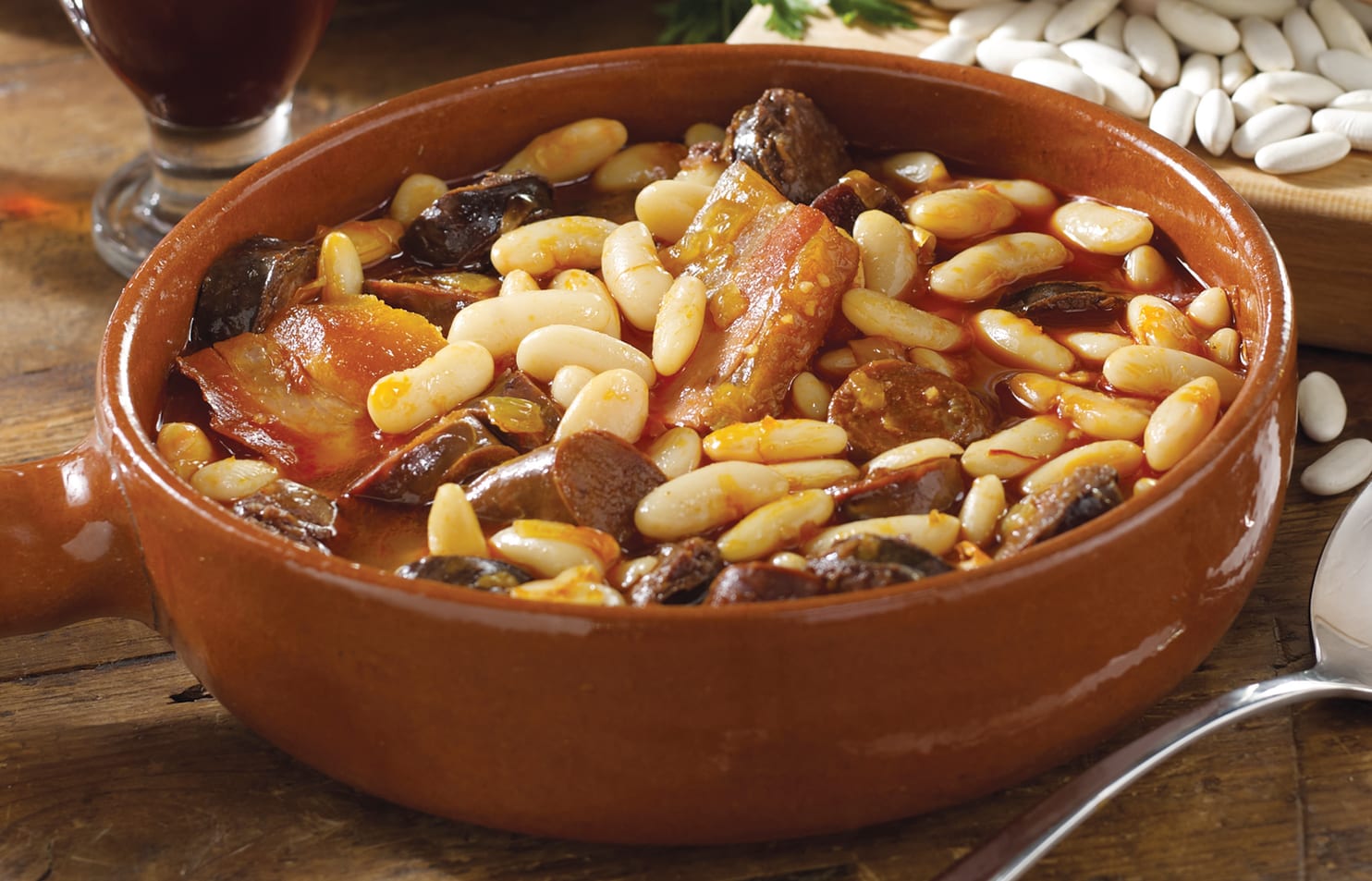
Ratings and Reviews
4.5
Good Excellent Will make It .
February 2016
I've tasted this stew when I went on vacation in Spain and have always yearn for its taste. Found La Tienda and the necessary ingredients and I cooked it over Christmas dinner. It was a success and everybody loved it. I had to use the serrano ham though since I don't know where to find the dried ham. I still am not used to the taste of morcillo. The stew cooked for about 1 1/2 hours and definitely less than 2 hours to achieve the tenderness. I guess it depends on the pot and how much heat you are using.
January 2013
We love this recipe. It freezes beautifully, so we make a big batch in autumn to use all winter. Like the other reviewer, we always have to cook the beans for about 2 hours before they become tender. Also, we only use one morcilla (Quijote) because they are so big. We never add salt because there is already plenty of salt in the meat products that are added. Finally, being garlic fans, we use two whole heads of garlic rather than one measly clove. Because it cooks for so long, the garlic flavor is not overpowering.
September 2011
After thinking about this dish for months, we finally invited friends for a Spanish dinner last night. The authentic fabada beans are quite expensive, but we decided to do it right, and I'm really glad we did. The beans are very special with an elegant, creamy texture. They absorb the rich flavors of the broth perfectly. We used Spanish chorizo and morcilla sausages. The chorizo is very salty, so watch out for that if sodium is a concern. The morcilla is interesting stuff, and adds a wonderful herbal earthiness to the dish. I definitely recommend it. The recipe works pretty well, except I'll bet no one in America can find a real Lacon - dry-cured pork shank. I'm sure it would be wonderful, but it's simply not to be found. (Someone should ask the Smithfield ham people to make 'em.) But I thought the slightly pungent flavor of dry cured pork would be important to the dish, so instead I used an 8 oz piece of cured salt pork, 4 oz chunk of serano ham, and an 8 oz slab of pancetta. I soaked the cured meat overnight to eliminate some of the salt, changing the water several times. Then when cooking the dish, I added a 1 lb smoked pork shank along with the cured pork. The combination was really delicious. I modified the recipe by starting with the onion-bacon-garlic mixture, adding the cured and smoked pork with the water. This I simmered for about 45 minutes. THEN I added the soaked beans to the broth, and the paprika. (I put the saffron in later, along with the sausages.) Another small problem with the recipe is timing. It implies that the dish is ready in a little more than 1 1/2 hours. My beans didn't approach tenderness until about 2 hours. Then I removed the pork pieces to trim away remaining fat and remove the shank bones. Then I added the sausages. The beans seemed to be perfect in about another 1/2 hour. I selected the lean pieces of pork that still had flavor, and added them back to the broth along with the cut up sausages. The dish was truly spectacular! Everyone absolutely loved it. We had a fresh crusty bread with it to sop up that perfect broth. The recipe with 14 oz beans makes enough for about 6. By the way, a Muga goes beautifully with this. Our appetizer was Bacalao al Pil-Pil served with Albarino. Altogether it was a great dinner.
April 2011


